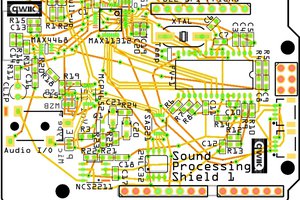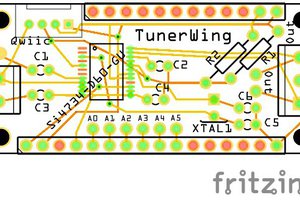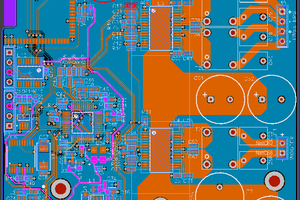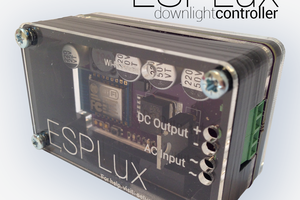This is, essentially, two mono audio breakout boards on one FeatherWing. The board takes audio from a microphone input and sends it the the I2C bus, then back from the I2C bus and out to a speaker. This allows the user to process the audio in various ways, depending on the needs of the application.
Thus, any of these functions (and sometimes more than one at the same time) can potentially be either turned into or integrated into a Feather project:
- Voice changer (primarily for cosplay, Halloween costumes, and similar projects; fit the device inside a helmet, or in your pocket!)
- Voice amplifier for teachers and other small-room speakers, actors in live theater (for smaller houses), or those with certain medical conditions (such as some forms of muscular dystrophy) that result in an unusually quiet voice
- Electronic megaphone
- Two-way communicator (over wires, or whatever wireless protocol you deem best -- LoRa, XBee, Bluetooth, etc.)
- Effects processor for musical instruments (generally, but not necessarily, acoustic instruments on mikes)
- Smart speaker (or interface with an existing smart speaker system)
- Hearing aid (probably with some extra features that can't be found in commercial hearing aids, since those can fit inside your ear)
- Boom mike operator's sound unit (in a film/TV setting)
- Parabolic microphone
- Electronic tuner/pitch pipe
- Record/playback device
- Myriad things I haven't thought of yet! (If you have an idea, please put it in the Comments below!)
While many of these applications involve only amplification (making the processor hardly even necessary), others involve changing the sound in some way, and/or sending it to and receiving it from another device.
Obligatory Tech Info:
The microphone input is an MAX4468 from Maxim, while the speaker output comes from an ON Semiconductor NCS2211D. Both are 8-pin SOIC chips -- a nice, compact size. In each case the application, other than connecting directly to two of the Feather's Analog pins, follows the suggested application on the respective chip's data sheet (page 9 in both cases).
The MAX4468 has a Shutdown pin which may be connected to D12. It normally is set to Low; set it to High, and the chip enters a power-saving Shutdown mode (supply current drops to 5nA, output enters a high impedance state, and bias current is switched off). In case you don't want to use it, a jumper is available to connect it to Ground full-time; it should not be left unconnected. (A jumper header is my preferred way of running an on-board selection for something that might change after installation, but not often.)
The input and output are connected to the I2C bus with an NXP Semiconductors PCF8591T/2,518 A/D and D/A Converter (a 16-pin SOIC). The default I2C address (with all three address pins connected to GND) is 1001000; the last three digits can be changed with solder jumpers. This means that one Feather can have a maximum of eight of these on board! (It's unlikely that you'll ever need more than one, but the possibility is there if I'm wrong. Besides that, there's room in any event for up to eight boards using the same or a similar I2C chip.)
Besides the Analog Reference for the PCF8591T, the only connections on the board not already mentioned are for the 3.3V and Ground.
Application:
The MAX4468 is explicitly designed for an electret microphone; I don't know for sure whether it would work with a piezoelectric mike, but I think it should. (I hope it does; one of my own designs calls for it!)
The actual connections for the mike and speaker are simple right-angle wire-to-board terminals. This is probably the cleanest solution, since the overall device will probably be kept in an enclosure that includes either mounts or jacks for these parts. You may, of course, replace them with whatever type of connector that you find appropriate (though you may need to edit the .fzz file, depending on what you choose).
Other than the mike and speaker connections, the board should be a simple...
Read more » bobgreenwade
bobgreenwade



 Matt
Matt